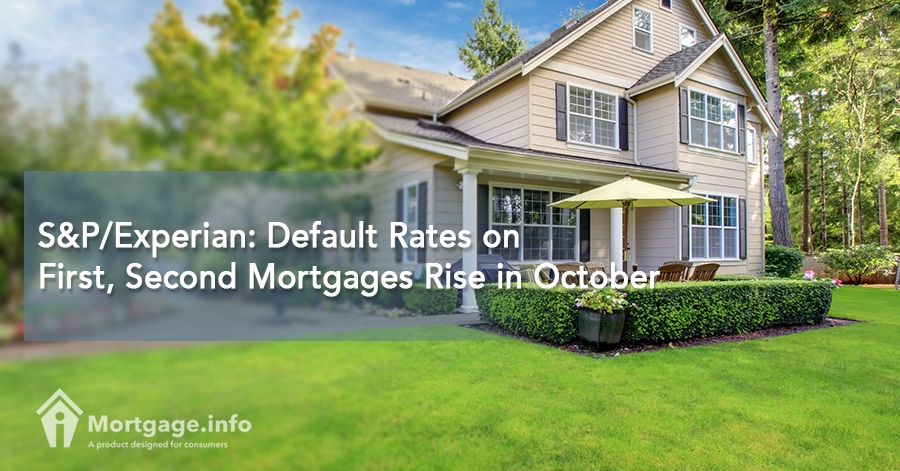“For the first time since January 2017, the default rates for autos, bank cards and mortgages all rose together,” said David M. Blitzer, managing director and chairman of the index committee at S&P Dow Jow Indices, which together with Experian released their consumer credit default report for October.
The default rates on first and second mortgages, bank cards, and auto loans rose last October, according to the S&P/Experian Consumer Credit Default Indices.
This increase in all the four consumer credit products measured by S&P/Experian also led to an increase in the nationwide composite default rate by two basis points in October.
First and Second Mortgages Default Rates in October
The “first” and “second” in mortgages refer to their priority in repayment. In case of liquidation, the first-lien mortgages, e.g. FHA, VA, USDA loans are paid first then second mortgages such as home equity loans, home equity lines of credit, and soft seconds.
By S&P/Experian report’s purposes, second mortgages mean closed-end second mortgages where the borrower gets the money/loan proceeds at closing and pays off the loan in regular monthly installments at a fixed or variable rate. This definition excludes HELOCs.
For the month of October, the national default rate on first mortgages rose slightly to 0.67% from 0.66% in September. The current index, however, fell compared to a year ago’s 0.70%.
As to second mortgages, the October 2017 index was 0.79% ‒ a 0.27% uptick from the previous month’s 0.53% and a year ago’s 0.58%.
The bank credit card default index increased to 3.28% in October, up from 3.15% in September and 2.76% a year ago.
In October, the auto loan index rate rose to 1.11%, from 1.05% and 1.08% in September and a year ago, respectively.
Nationwide Default Rate on the Rise, Should Anyone Be Worried?
These four indices underlie the national composite default rate index of 0.90% in October. This was a jump from 0.88% in September 2017 and 0.87% in October 2016.
Speaking of the composite index, S&P and Experian found these trends in five metropolitan statistical areas or major cities surveyed in October:
- New York, Los Angeles, and Chicago each saw an increase in their consumer default rates to 1%, 1.08% and 0.72%.
- Dallas remained unchanged at 0.78%.
- Miami decreased from 1.19% to 1.06%.
Despite the uptick in default rates, the S&P/Experian report said consumers are not facing any financial stress.
Mr. Blitzer elaborated: “The economy is doing well, with 3% GDP growth in the third quarter, stable inflation, low unemployment and retail sales growing at a 4% annual rate. Auto sales jumped in September after drifting lower for most of the summer and then pulled back slightly in October.
“The data does not suggest any unusual financial stress facing consumers which would explain the small, but across the board, increases in the default rates.”
But if there’s one thing, a concerning one at that, that could explain this across-the-board increase, it is the “recent softness in real disposable personal income” per Mr. Blitzer.
“If a widening spread between income and spending appears, defaults may fill the gap,” he added.
* * *
Consumer Default Explained
Per the S&P/Experian, consumer default occurs in any of the following instances.
1. When there is serious delinquency, i.e. 90 + days and more on mortgages (first and second) and auto loans (and leases); and 180 + days past due on bank cards.
2. When the loan has been written off by the lender as it is no longer collectible.
3. When a borrower files for bankruptcy protection to reorganize or liquidate his/her debts.
4. When a lender repossesses a collateral securing the loan repayment.
For more details on how S&P and Experian measure default rates, click here

